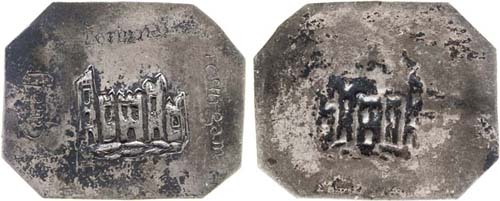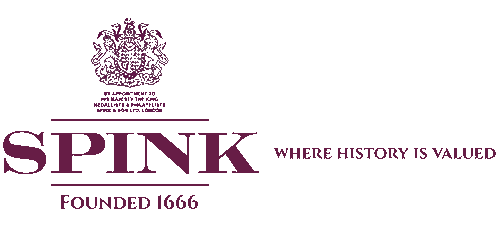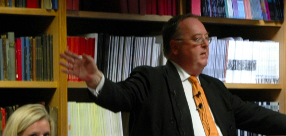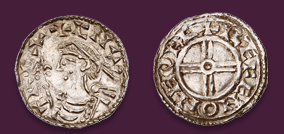
Auction: 3011 - The Colin Adams Collection of British Pennies, Foreign Coins & Medals
Lot: 435
†Charles I, Scarborough besieged, Shilling, 18th Century concoction (?), view of castle, Caroli Fortuna Resurgam engraved around, uniface with incuse impression of castle on reverse, on an octagonal flan (JGB 1238 (same dies); N.2651), as made, toned, extremely fine, rare Estimate £ 200-250 These pieces have long been a source of difficulty for numismatists and an extensive review of the evidence relating to them was published by H E Manville in Spink Numismatic Circular, September 1982, pp.229-31.
The flans are either round or octagonal with a rather 'hard' feel and harsh edges There are two varieties, with or without an incuse impression on the reverse.The latter are restrikes, produced around 1780 by Dr Gifford from the original castle punch, but the origin of those with an incuse impression is still uncertain.
They are clearly intended to pass as siege pieces and the putative attribution to Scarborough is due to the similarity of the castle design to that on the definitive Scarborough issues and to the engraved legend 'Caroli Fortuna Resurgam' which Sir Hugh Cholmley, governor of the besieged town, records in his published diary as having been placed on Scarborough issues.
They first make a documented appearance in the 1742 Earl of Oxford sale and an example was illustrated in the non-sale catalogue of the Earl of Pembroke collection, published in 1746, but there is no example in the notable collections formed in the late 17th century such as Bridgewater House, Archbishop Sharp and Lord Middleton.
As early as the 1802 Tyssen sale, lot 3054 notes against four examples 'doubtful if struck in the time of Charles I' and this remains the accepted view. It is difficult to place this non-denominational type in the same series as the roughly-cut Scarborough pieces showing values, while the use of the distinctive castle design, varied flan shape and engraved motto would be logical for pieces produced to cater for later demand for souvenirs of the Civil War. The lack of any firm provenance prior to 1742, and the fact that the castle punch was extant in the 1780's has led to suggestions that all these curious pieces, with incuse reverse impression or without, are concoctions dating from the 18th century.
Sold for
£450




